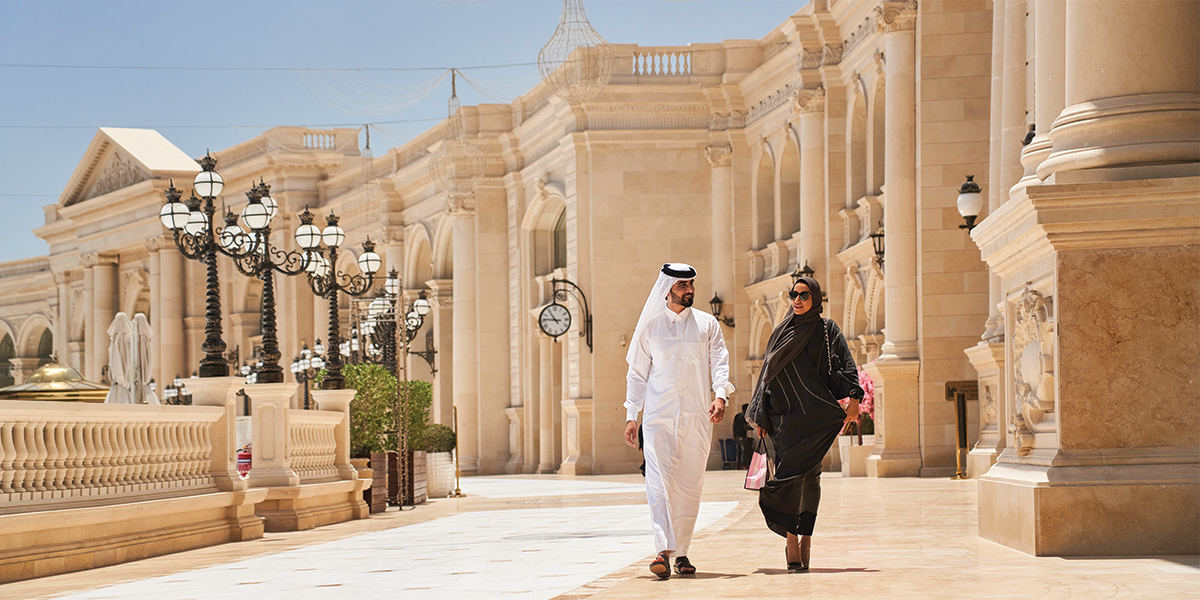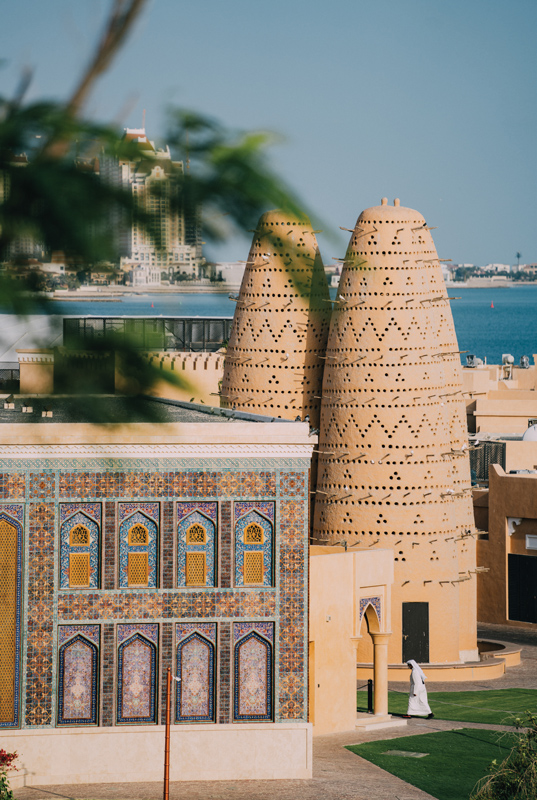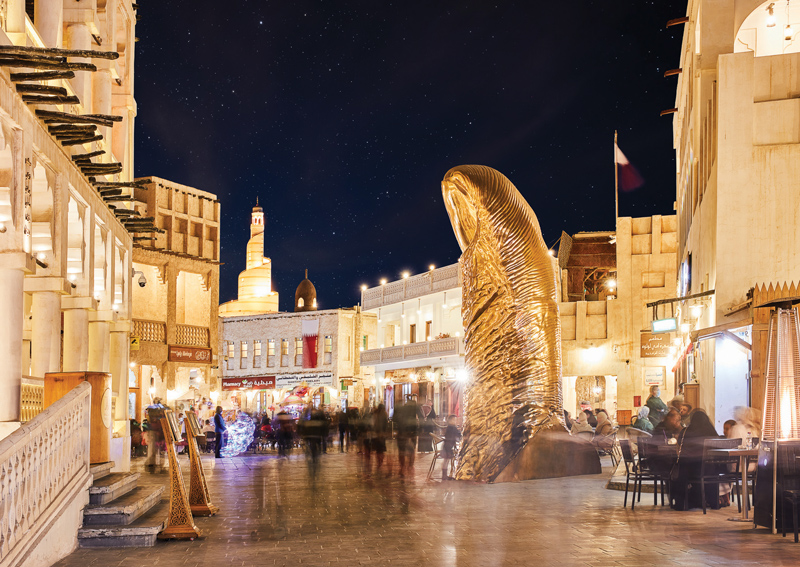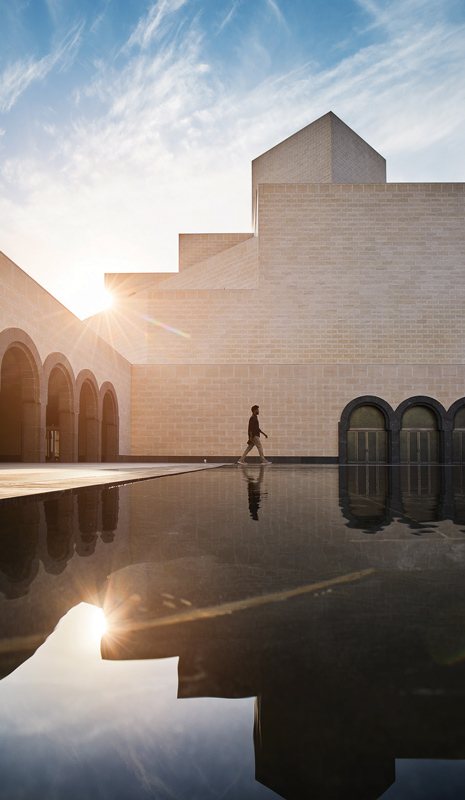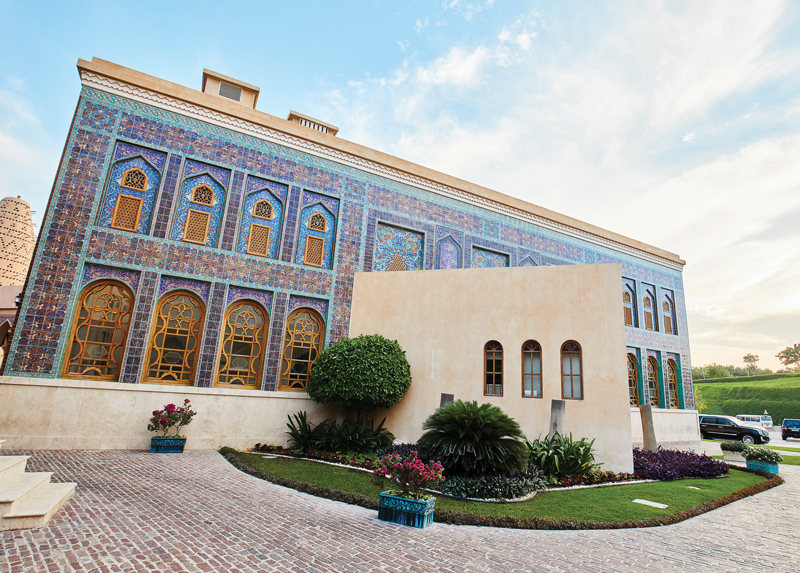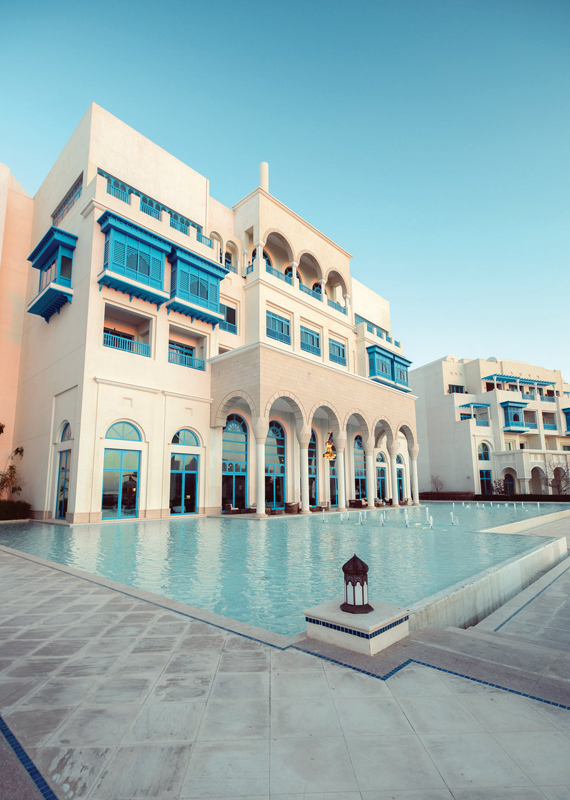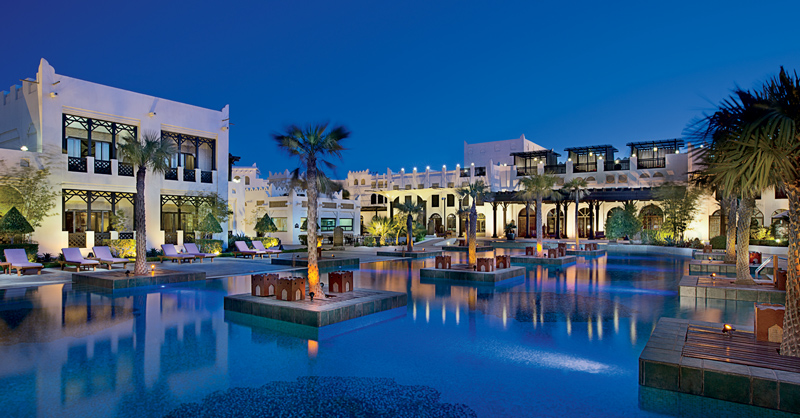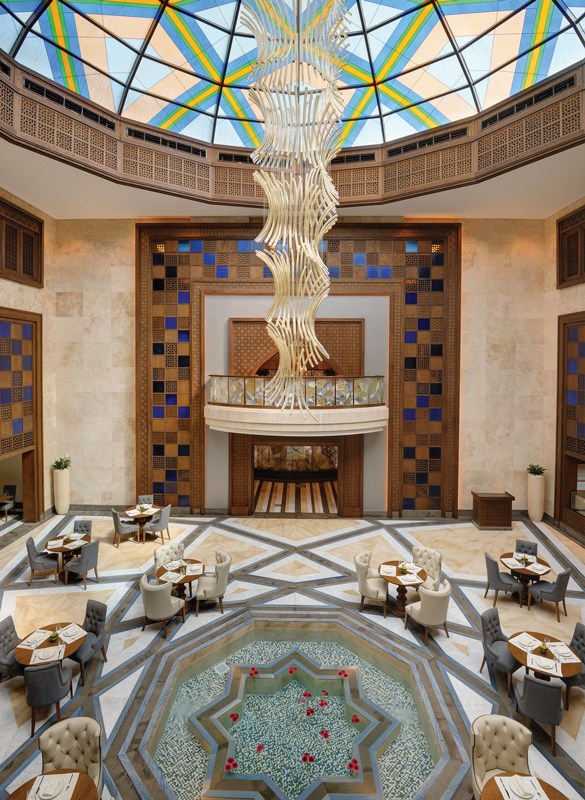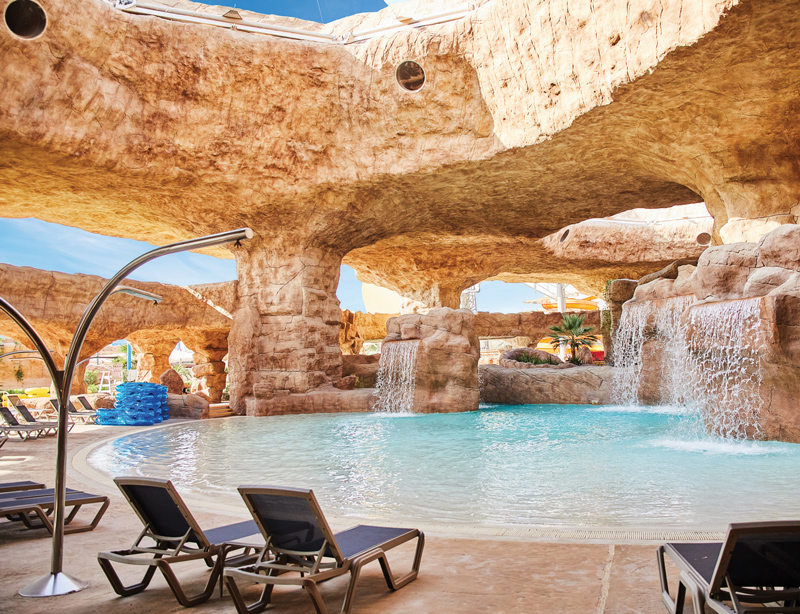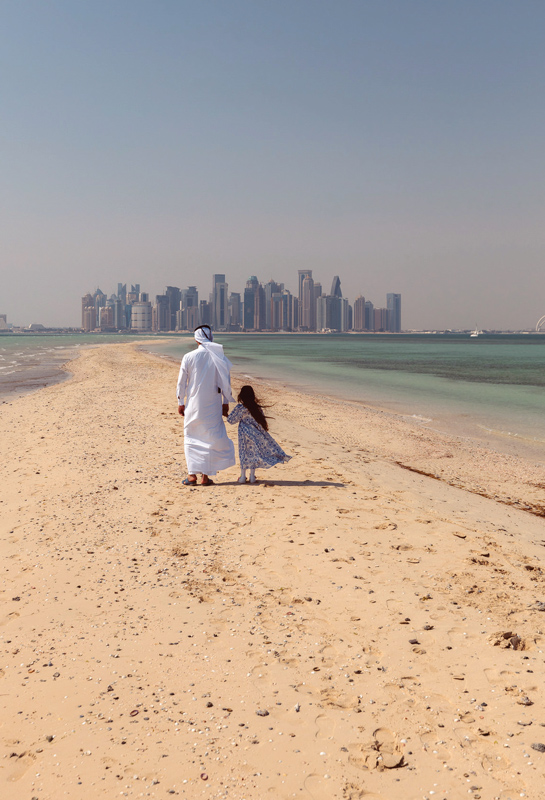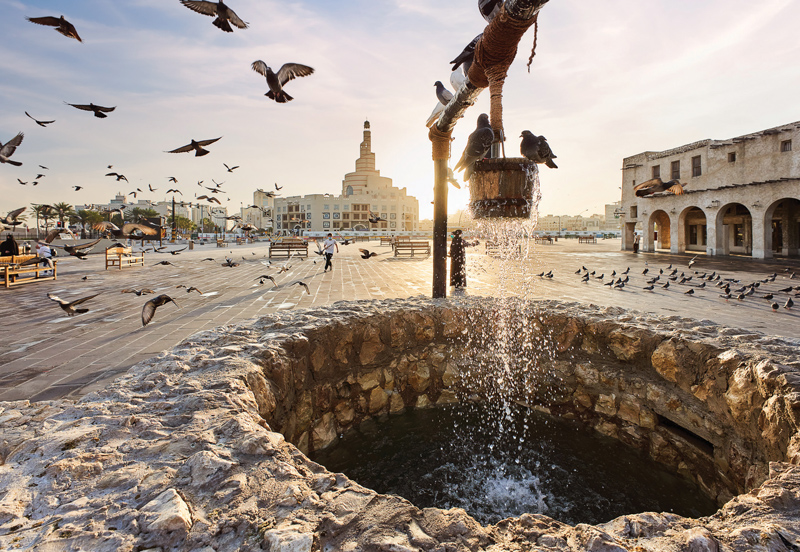The pearl of the Persian Gulf
In a short time, this peninsular nation became the most prosperous in the world, making it one of the most visited countries for its history and tourist attractions.
On December 2nd, 2010, Qatar was named the host country for the 2022 World Cup. At that time, little was known about the historical process of this peninsular nation, which went from being a country with an economy based on pearl harvesting, fishing and trade, to become the richest country in the world.
Currently, Qatar’s main sources of income are its large oil and gas exports, worth more than $58 billion. It has one of the three largest natural gas reserves in the world, after Russia and Iran, and as trading partners India, China, Japan, South Korea, the United States and the United Arab Emirates.
This attracted countless investors and tourists eager to visit this flourishing peninsular kingdom. As a result, the country has rapidly developed its hotel, airport and service infrastructure, among other offerings to visitors, making it the best place in the Middle East in terms of hospitality.
To facilitate entry to Qatar, citizens from more than 80 countries (including Mexico) do not require a visa for a 30-day stay, with the possibility of extending their stay for another month, making it the most open country in the Middle East and the eighth in the world in terms of visa facilitation.
Doha, the capital of the State of Qatar
The territory of Qatar covers an area of 4,448 square miles and is a flat rocky plain, with inland seas, estuaries, bays and basins in the northern and central areas, the latter considered the most fertile lands that are home to different types of vegetation.
More than 80% of its 3 million residents live in Doha, its cosmopolitan capital founded in 1850. It is the economic and financial center of the nation, with countless skyscrapers, especially in Al-Corniche, the area of the most spectacular, in a coastal strip of 4.3 miles, ideal for walking or on a boat and enjoy the skyline.
Bathed by the waters of the Persian Gulf, Qatar, an independent nation since 1971, has several islands such as Halul, Shraouh and Al-Asshat, and to the south, a land border with Saudi Arabia. Other cities are Al-Wakrah, located 12.4 miles from Doha, which can be reached by the metropolitan railroad; Al-Khor (Jor), 31 miles from the capital of Qatar; Dukhan, an oil town, 49.7 miles km from Doha; and Al-Shamal, 62 miles from Doha, famous for its beaches.
Art everywhere
The government of Qatar has invested large amounts of Qatari riyals (the local currency) in building museums and acquiring works of art to bring culture to its inhabitants. This includes placing monumental sculptures in avenues and squares, mainly in and around Doha.
From the arrival at Doha’s Hamad International Airport, art is present with 8 Oryxes by Tom Claasen, representing a herd of Arabian antelopes, Qatar’s national animal; Flying Man, designed by Dia al-Azzawi, commemorating the flights of Bin Firnas or Armen Firman, whose feat was to test a final flying machine made of a silk cape and reinforced with wooden rods in the shape of wings, and Urs Fischer’s childlike Lamp Bear, a 23 feet yellow teddy bear under a large night lamp made of bronze.
Public art installations include Sara Lucas’s Perceval, featuring a life-size bronze horse, in Aspire Park; Ali Hassan Al-Jaber’s Desert Horse, located outside Hamad International Airport, is an interpretation of the iconic desert horse and depicts different forms of the Arabic letter “ ن (“n”). At the Katara Cultural Village center, Subodh Gupta’s Gandhi’s Three Monkeys, displays three enormous heads in military garb reminiscent of Mahatma Gandhi’s metaphor: “see no evil, hear no evil and speak no evil.”
Richard Serra’s impressive steel image, “7”, nearly 82 feet high, is located in the Museum of Islamic Art, and pays homage to the spiritual importance of the number seven in Islamic culture; Maman, Louise Bourgeois’ giant marble, bronze and stainless steel chandelier, is “garrisoned” inside the Qatar National Convention Center.
Tony Smith created Smoke, a 82 feet high figure, placed at the entrance of the Doha Convention and Exhibition Center; Pouce by Cesar Baldaccini, is a giant thumb reminiscent of the souks (traditional Arab market), and the five gigantic hands made in bronze, The Challenge 2015 by Ahmed Al Bahrani are a reminder of the Handball World Cup in Qatar.
The Sidra Hospital, the work of the Argentinian César Pelli (1926-2019), the same architect of the World Financial Center in New York, the Petronas Towers in Malaysia and the Hong Kong International Financial Center, has in its surroundings The Miraculous Journey by Damien Hirst, with 14 monumental bronze sculptures illustrating the development of a fetus, and north of Doha in the middle of the desert is Richard Serra’s East-West/West-East, four steel plates, each more than 46 feet high, separated by 0.62 miles to make us think about isolation and the passage of time.
A visit to the Imam Abdul Wahhab Mosque in Doha, the most important and colossal mosque in the country, known as the Grand Mosque of the State of Qatar, should not go unnoticed. The mosque, inaugurated in 2011, with a capacity for 30 thousand people, apart from three libraries, prayer rooms and separate ablution rooms for men and women, and special prayer rooms.
Guardians of art
Some museums, in addition to housing permanent exhibitions, stand out for their architecture. Among them is the National Museum of Qatar, designed by French architect Jean Nouvel, winner of the 2008 Pritzker Prize. The 430,000 square feet site is reminiscent of the natural crystal formations known as “desert roses”.
The Chinese architect I. M. Pei (1917-2019) designed the Museum of Islamic Art, considered the jewel in the crown of local museums; built on five floors on an artificial island, it includes chef Alain Ducasse’s Idam restaurant, with furniture and cutlery by Philippe Starck. An original site is the Sheikh Faisal Bin Qassim Al Thani Museum, a traditional-style fort that houses Sheikh Faisal Bin Qassim’s personal collection of Islamic art, Qatari heritage, vehicles and countless objects.
Contemporary Arab artists are represented at the Arab Museum of Modern Art, with more than 9,000 works on display, from the 1840s to the present day, and the Msheireb Museums, in the oldest part of the capital, consisting of four old houses restored and transformed into galleries, appreciated as local heritage.
An artist’s paradise
Art and culture converge in Katara Cultural Village, near Doha, through numerous galleries in the Katara Art Center dedicated to modern art, with museums such as the Qatar Museum Gallery and outdoor sculptures. Within the destination, inaugurated in 2010, are the Katara Mosque, by Turkish architect Zeynep Fadilloglu, and the golden, for the golden tile covering that gives it its name.
For the enjoyment of open-air concerts, the cultural center has a classical Greek-style amphitheater, a 35,252 square feet building with a capacity of 5,000 spectators, and the Al Thuraya Planetarium, which takes guests on a journey to the farthest reaches of the universe. End the day at Katara Public Beach and Katara Hills for a tour of the trails.
Promoting learning
Qatar Foundation established Education City - with the presence on campus of prestigious universities, including Northwestern University, Texas A&M University at Qatar, University College London and Georgetown University Qatar, as well as research institutions - on the premise of building an economy based on expanding knowledge and preserving culture in a 4.6 square mile area.
As well as students, visitors have access to the National Library of Qatar by Dutch architect Rem Koolhaas, an 484,375 square feet building housing more than 1 million books, and the Education City Mosque, winner in the Religion category at the 2015 World Architecture Festival, by Iraqi architect and calligrapher Taha al-Hiti.
Another important facility in Education City is Al Shaqab Equestrian Center, where the legacy of Arabian thoroughbred horses is safeguarded, with more than 700 specimens safeguarded, and the world’s most advanced equestrian facilities and programs in training and jumping, validating the importance of Arabian equines in Qatar’s history and culture.
Another traditional sport among Qataris is horse racing at the Qatar Racing and Equestrian Club, recognized as the best equestrian training center and organizer of international competitions, as well as camel racing at the Al Shahaniya Camel Race Track. Originally the camels were ridden by child jockeys, a practice banned in 2004, and since then small robots act as jockeys, remotely controlled by the owner of the ungulate.
Another cultural heritage is falconry, considered Intangible Cultural Heritage of Humanity by Unesco, for the breeding, domestication and training of falcons, eagles, mileons and other birds of prey for hunting; this custom dates back four thousand years in the past.
Another booming sport is golf, with the 18-hole Doha Golf Club, home of the Qatar Masters of the European Tour since 1998; it includes a 9-hole par 3 executive course with artificial lighting, to be played at night. Another venue is the Education City Golf Club, with three courses designed by Spaniard José María Olazábal. The main stage has 18 holes, another 6-hole course, ideal to be played in 90 minutes, and a 9-hole Par 3, with artificial lighting.
There are two sand golf courses: the 18-hole Dukhan Golf Club – the oldest in Qatar –, in the oil city of Dukhan, with more than 50 years of existence, and the 9-hole Messaieed Golf Club, 19 miles south of Doha. As its name indicates, a sand course is devoid of grass, with sand fairways and brown greens, a compacted mixture of sand and oil; each player must carry an artificial grass mat and place his ball there to play his shots.
The accommodation offer
Visitors to Qatar in Doha have the option of choosing luxurious hotels for an ideal vacation. Among the wide range of hospitality facilities are located:
- Hilton Salwa Beach Resort & Villas. Located in the south, it has a marina, 2.1 miles of private beaches, the Eforea spa and four restaurants with various specialties; for the family there is the Desert Falls Water and Adventure Park, the largest in Qatar.
- InterContinental Doha. Facing West Bay Lagoon, it has the longest private beach in the city, 14 restaurants, including La Mar by Gaston Acurio, the famous Peruvian chef, and the Parisian salon Manko Doha. The spa offers 16 treatment rooms, indoor pool, Jacuzzi, sauna and steam.
- St. Regis Doha. Near the West Bay diplomatic district, features ten restaurants with renowned chefs, private beach, Olympic-size pool, Remède Spa, ocean-view rooms and suites; St. Regis butler service is available around the clock.
- Four Seasons Hotel Doha. Erected in towers, it has a private marina with the exclusive Nobu Doha restaurant by Chef Nobuyuki Matsuhisa and designed by David Rockwell, as well as 10 restaurants and lounges. Guests can enjoy the privileged beach and spa.
- Marsa Malaz Kempinski. It is a palatial resort at The Pearl, with seven restaurants, including Toro Toro by Mexican chef Richard Sandoval, four elegant bars and lounges, and the Spa by Clarins with 21 treatment rooms, private beach and outdoor pools.
- Ritz-Carlton Sharq Village & Spa. Blending traditional Islamic architecture with modern amenities, its 14 privileged luxury resort villas are intertwined with pathways and gardens. Guests will enjoy the spa, restaurants and bars, private beach and infinity pool.
- Banyan Tree Doha at La Cigale Mushaireb. Located in the heart of the Mushaireb district, within the Doha Oasis project, with exclusive department stores and a theme park, it features interior design by Jacques Garcia. Its Saffron, Il Galante and Qalamkarri restaurants are unique.
- Banana Island by Anantara. A 25-minute catamaran ride from Doha, it enjoys an 2,624 feet crescent-shaped beach with overwater villas. It offers dining options with five restaurants, cafes and spa with Zen treatment rooms and a spectacular Turkish and Moroccan hammam and wave pool for surfing.
Arrival by sea
One option for arriving in Qatar is by sea, at the Porto Arabia Yacht Club, in the heart of The Pearl-Qatar (Doha), with 891 berths and full services, or the Corinthia Yacht Club.
Other ports of call in The Pearl-Qatar are: Marina A (Ponte Marsa, Doha), South Marina Yacht Club (Lusail), Venice Yacht (Doha), Ronautica Middle East (Marina Way One, Doha), Four Seasons Luxury Marina in Doha (The Corniche, Diplomat Area Street, West Bay, Doha), Ritz Carlton Marina (Doha), Lusail Luxury Marina in Doha (Marina Road Lusail City), Marina Gate 12 (Ponte Marsa, Doha), QQ Marina (Marina Drive, Doha), Retaj Inn Marina (Porto Arabia Drive, Doha). Near Doha are MWANI Qatar’s Private Boats Berth (Jor Municipality) and Al Dakhira Marina (Al Dhakira).
Gastronomy in Qatar
The most renowned chefs came to Doha with their restaurants. This is a sample of them.
SMAT is located in Al-Corniche and serves authentic Qatari dishes, with ingredients characterized by their distinctive origins, spices, textures and flavors.
Morimoto Doha. Chef Masaharu Morimoto set up his first Middle Eastern location here, where signature omakase and the finest sushi are enjoyed alongside Wagyu beef.
Chef Wolfgang Puck’s Cut offers a menu featuring a selection of beef, with local produce and ingredients, cooked simply.
Opal, owned by Gordon Ramsey, is located in the St. Regis hotel. Its menu is as homemade as possible, and that includes the Opal Wagyu burger.
Three-Sixty, located on the 47th floor of The Torch skyscraper, is ideal for enjoying Mediterranean preparations with 360° views of Doha in its revolving restaurant.
The Pearl Qatar
A must-see is The Pearl Qatar, a man-made island shaped like a string of pearls, built on nearly 1,000 acres of reclaimed land near Doha’s distinguished West Bay district. The development has Mediterranean-style marinas, residential towers, villas and sumptuous hotels, with designer boutiques and art galleries. It is home to dining venues ranging from cafes to five-star culinary experiences, highlighted by pedestrian plazas and a wide range of landscaped gardens.
Known as the “Arab Riviera”, it is divided into three areas: Qanat Quartier, the “Little Venice”, with its colorful buildings, bridges crossing the canals and pedestrian areas, with exclusive beachfront stores and restaurants. It is followed by Porto Arabia, a modern Mediterranean district, with luxurious yachts and dining venues, and Medina Centrale, with squares, gardens, children’s play areas, along with cafes, restaurants and stores.
Enjoy the desert
Qatar offers entertainment in its dunes around its cities, following the practice of the Bedouin tribes that moved between towns to trade their products. The tradition of setting up a tourist camp in the 21st century arrives with glamping, where today’s travelers do not travel on camels, but in modern 4x4 vehicles, crossing the endless dunes.
The glamping takes place in a tent with air conditioning and all the hotel services, to admire the magical sunsets; the adventure is completed with a safari aboard a camel, the “official” transport of the place.
It’s not all dunes
If you thought Qatar was all desert, 31 miles from Doha is Bin Ghannam Island, known as Purple Island, for having been a region where dyes of that hue, associated with royalty in the second millennium B.C., were made. The island is famous for its natural beauty, terrestrial and marine flora and fauna, and ideal for a day trip with the family, with areas to walk or kayak through mangroves and vegetation.
Two climatic seasons
- Due to its geographical location, Qatar has two climatic seasons. The summers are hot, with temperatures ranging from 36 °F to 122 °F, with little rainfall, and between November and April, mild winters, when the thermometer averages 62 °F. For this reason, the dates chosen for the 2022 World Cup were November 21th to December 18th.
- The flag of Qatar is white and maroon, with a vertical division in the shape of a nine-pointed saw, symbolizing that Qatar is the ninth member state of the “reconciled emirates” following the 1916 treaty between Qatar and the United Kingdom.
- The current head of state is His Highness Emir Sheikh Tamim bin Al Thani, a descendant of the Al-Thani family, which has ruled the country since 1825.
- The name Qatar probably comes from the Roman writer Pliny the Elder, who in the early Christian era referred to the inhabitants of that region as Cathar.
Text: Ricardo Villanueva ± Photo: Qatar Tourism

